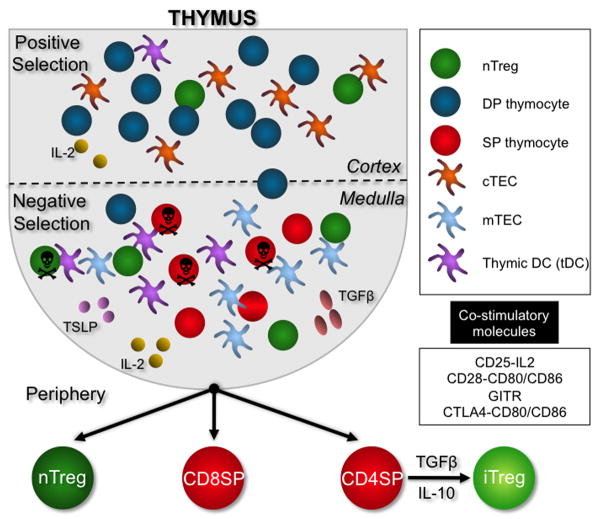Figure 1.
As double positive (DP) thymocytes navigate the cortex of the thymus, they will encounter cortical thymic epithelial cells (cTECs) and rare thymic dendritic cells (tDCs). Only a few DPs will encounter cognate peptide/MHC and with co-stimulation by CD28 or other unknown mechanisms, upregulate FOXP3 and progress to the medulla. Most DPs, however, will undergo positive selection and progress to the medulla as FOXP3- cells. Within the medulla, lingering DPs and the more abundant single positive (SP) CD4 and CD8 thymocytes will encounter AIRE+ medullary thymic epithelial cells (mTECs) and tDCs. mTECs and tDCs present higher affinity peptides that allow for deletion of potentially autoreactive thymocytes. They also provide the co-stimulation necessary for the initiation of FOXP3 expression. tDCs and perhaps other antigen presenting cells (APCs) provide a source for the IL-2, TSLP and TGFβ molecules necessary but not required for nTreg development.

